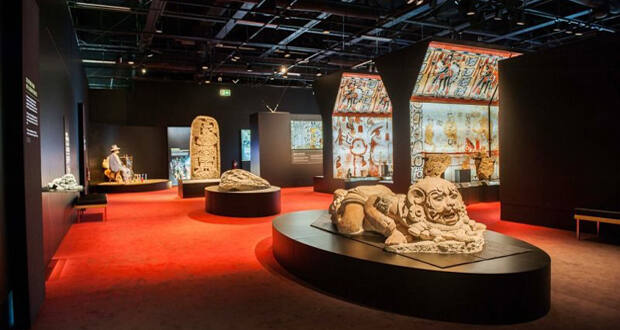The record-breaking Auschwitz exhibition at Kansas City’s Union Station is closing this month. Station officials announced this week that the next major exhibition, MAYA: The Great Jaguar Rises, will open on May 13.
“This major exhibition spotlights the mystery, legacy and resilience of one of the world’s great civilizations — the Maya of Central America — a powerful culture that rose in the tropical rainforests of Guatemala thousands of years ago,” said George Guastello, Union Station president and CEO. “Through educational experiences like MAYA, we promote understanding and appreciation for peoples from around the world. Their traditions. Their achievements. And their lasting impact on the global tapestry of humanity. In so doing, we hope to bring an undeniable connectedness that transcends time and place.”
The Maya flourished in cities of stone carved into the jungles of Mexico, Guatemala, Belize, Honduras and El Salvador. The exhibition will feature more than 300 original objects that detail the daily life, religion, politics and innovations of the Maya. By studying the stars, the Maya developed a calendar more accurate than any other in the world. Their use of the number zero opened the door for advanced mathematics. Rubber balls were essential to Maya sports centuries before the “discovery” of vulcanized rubber. And they introduced the world to chocolate.
READ: Silver Dollar City opens, expects large crowds as pandemic ends
Although the exhibition looks back at the height of the Maya civilization, it also acknowledges the millions today who still speak a Mayan language and the many more who are direct descendants. Far from being a lost or ancient civilization, the Maya thrive today in renewed vibrancy.
“With the Maya, we can explore and see how people without any contact to other civilizations in Europe, Africa or Asia came up with similar ideas, inventions and solutions,” said Nikolai Grube, Ph.D., curator of the exhibition and professor of anthropology of the Americas at the University of Bonn. “The Maya civilization was never lost. This was a very romanticized 19th century European perspective on the Maya. What was lost were the big cities in the rainforest. The Maya of today preserve many ideas, languages and forms of living of their ancestors.”
Tickets and additional information are available at www.unionstation.org.
–Alan Goforth | Metro Voice








